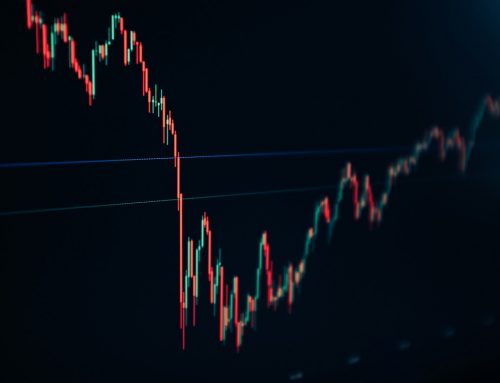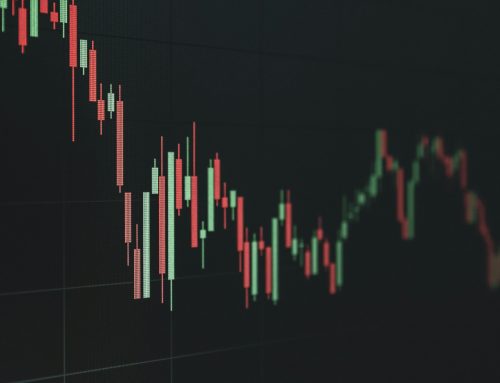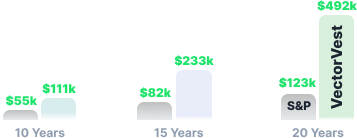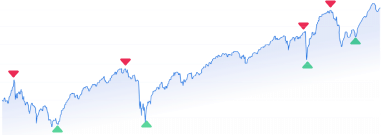DO COMPANIES WITH GENDER
BALANCE REALLY MAKES MORE MONEY?
It’s a pretty bold claim that boards with more gender-diverse compositions make better decisions and that leads to better business outcomes across the triple bottom line i.e. profit, planet, and people. However, what data can truly back this up?
During this episode of Fantastic Female Fridays, I sought to really delve into this and examine the connection as well as determine how to invest accordingly.
I felt it was important to reflect on my own experience with VectorVest. Did I feel held back from opportunities as I was a woman? That’s an emphatic “no”. On the other hand, did I feel the company encouraged me to come forward for opportunities? Again, that’s a certain “yes”. After all, the “Fantastic Female Fridays” show is a manifestation of that. However, the real test of encouraging diversity is when one is “tapped on the shoulder” for the hidden opportunities that one doesn’t even know exists. For that too, I’m very grateful and long may they continue!
Moving from my personal anecdotes to the macro statistics, let’s consider some major global research from authoritative bodies.
Credit Suisse studied 30,000 senior executives at over 3,000 companies across the world. Among their findings: companies in which women held 20% or more management roles generated 2.04% higher cash flow returns on investment than companies with 15% or fewer women in management roles. You can check that out at The CS Gender 3000 in 2019: The Changing Face of Companies.
Researchers from the Peterson Institute for International Economics conducted a global survey of financial and governance data from 21,980 publicly traded firms across 91 countries. The study revealed a positive correlation between the presence of women in senior leadership and profitability (defined as gross margin and net margin). This correlation proved stronger for women in executive leadership positions than for women on boards. You can check that out at Is Gender Diversity Profitable? Evidence from a Global Survey.
McKinsey & Company’s global study of more than 1,000 companies in 15 countries found that organizations in the top quartile of gender diversity were more likely to outperform on profitability—25% more likely for gender-diverse executive teams and 28% more likely for gender-diverse boards. Organizations in the top quartile for ethnic/cultural diversity among executives were 36% more likely to achieve above-average profitability. At the other end of the spectrum, companies in the bottom quartile for both gender and ethnic/cultural diversity were 27% less likely to experience profitability above the industry average. Researchers measured profitability by using average EBIT margins. You can check that out too at Diversity Wins: How Inclusion Matters.
Each of these reports delve into the data of many, many people and are substantiated by organizations that are thought leaders in their area. However, how can we turn this economic and social insight into an investment case?
During the episode, we considered four different ETFs:
A globally focused fund tracking company “that demonstrate high levels of Diversity, Inclusion, and People Development, and low News controversy”. It has a Total Expense Ratio of 0.25% and it’s March 2020 to March 2021 performance was a sparkling 54.89%
This is an ETF passively investing in an index comprised of “designed to track the top companies leading the field internationally in terms of gender equality” with another very impressive past year’s performance of 57.06%. There are 11 countries in the index.
This ETF is modeled on “an equally weighted benchmark of 150 companies from around the world that score highly for gender equality. There are £36 million assets under management in this ETF which delivered a huge return of 59.33% featuring the financial and consumer discretionary sectors as the two largest of the fund.
According to the VectorVest stock analysis report “The Fund seeks to provide investment results that, before fees and expenses, correspond generally to the total return performance of an index that tracks U.S. companies that are leaders in advancing women through gender diversity on their boards of directors and in management.”. It has an above-average dividend of 1.11% (which is higher than the average yield of 0.8% in the VectorVest database).
As I took the audience through this and we looked at the holdings of each one, we could see some repetition of the companies quoted. We saw Nordstrom, GAP, Johnson & Johnson, Disney, Netflix, and a range of others. We decided to apply a layer of VectorVest magic by putting the top ten holdings of the SHE ETF into a watchlist and then examining the average CI, VST, GRT, and RS. In this way, we could weave the demonstrable business case put forward by gender diversity, the ETFs at our disposal, and refine our choice according to the type of investor we are.
If you’re interested in these types of social trends and investment cases, our new ESG and Tech show is going to be right up your street. Register for updates at www.vectorvest.com/fff!
What you should do next…
- Get our latest blogs delivered right to your inbox, subscribe to our newsletter.
- The market moves fast! Get our most current evaluation of this stock with our FREE stock analysis tool.
- Looking for stock picks? Not sure if now is the right time to buy/sell? For a limited time, enjoy the full benefits of a 30-day subscription to VectorVest for only [offer_txt] (usually up to [saving_txt]/month) . Get access to our full list of screeners showcasing our top stock picks that tell you exactly what to buy, when to buy, and when to sell.












